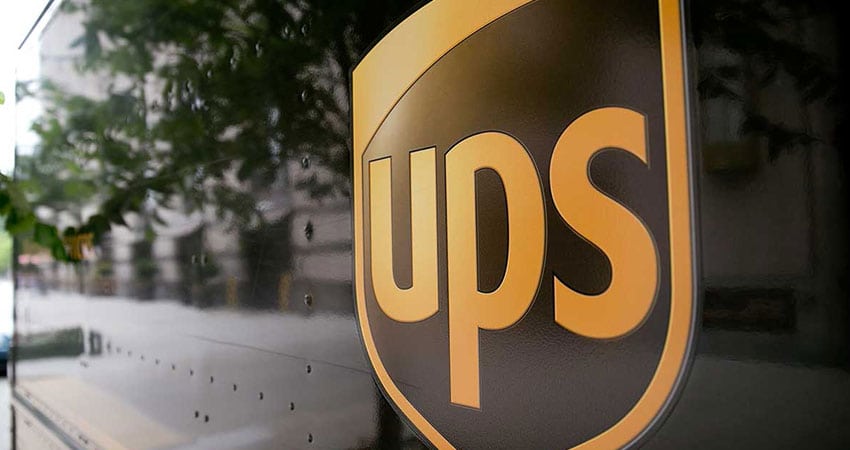UPS and the International Brotherhood of Teamsters reached a five-year contract settlement today, averting a costly strike of 340,000 members that would have begun a week from today and giving part-time workers the pay increases their leadership had pushed for over the past few weeks, while handing newly energized organized labor a major victory.
“I think the entire parcel market is breathing a collective sigh of relief,” said Nate Skiver, a consultant with LPF Spend Management and a former senior parcel manager for Gap Inc. and Abercrombie & Fitch.
While many including members of Congress had been calling for federal mediation, as was the case with the West coast dockworkers deal, the Teamsters made it plain they didn’t want any outside involvement. UPS had recently begun training managers to step in in the event of a strike.
The starting hourly wage for part-time workers at UPS will be $21, effective immediately, rising to $23 per hour. Part-time workers with seniority who earn more under a market rate adjustment will still receive general wage increases, plus a $1.50 an hour longevity increase.
The overall increase for part-time workers is double what it was under the last agreement in 2018, the Teamsters said, equaling 48% percent for the next five years. All Teamsters working for UPS will see a $2.75 per hour bump this year, and $7.50 more per hour over the length of the contract.
The deal must now be ratified by UPS’s rank-and-file Teamster members in the U.S. and Puerto Rico in Monday meetings, a formality after a hard-fought battle. It came on the first day that talks resumed after being broken off July 5.
[Related: the union representing cargo pilots at FedEx rejected a tentative deal that would’ve given them a 30% increase over five years, below other contract agreements of up to 40% over that timeframe. Federal mediation is likely.]
“We demanded the best contract in the history of UPS, and we got it,” Teamsters General President Sean O’Brien said in a statement. “UPS has put $30 billion in new money on the table as a direct result of these negotiations. We’ve changed the game, battling it out day and night to make sure our members won an agreement that pays strong wages, rewards their labor, and doesn’t require a single concession.”
O’Brien added the agreement “sets a new standard in the labor movement and raises the bar for all workers.”
“Together we reached a win-win-win agreement on the issues that are important to Teamsters leadership, our employees and to UPS and our customers,” said Carol Tomé, UPS CEO in a statement. “This agreement continues to reward UPS’s full- and part-time employees with industry-leading pay and benefits while retaining the flexibility we need to stay competitive, serve our customers and keep our business strong.”
Other highlights of the deal:
- An end to the 22.4 junior driver classification, reclassifying them as regular package drivers and placing them into the seniority track.
- The addition of air conditioning in all new vehicles after Jan. 1, and two fans and air induction vents in current vehicles.
- Martin Luther King Jr. Day as a paid holiday.
- An end to forced overtime on days off.
- UPS will prioritize part-time drivers for seasonal work using their own vehicles, instead of outside contractors, with an eight-hour shift guarantee, and seasonal work will be limited to a five-week period in November-December.
- UPS will create 7,500 new full-time Teamster jobs and fill 22,500 open positions, and provide more opportunities for transitioning from part-time to full-time work.
Skiver said a strike would have been chaotic, with increased costs and diluted margins for shippers, while proving a short-term gain for FedEx and the U.S. Parcel Service. He added any volume lost by UPS during negotiations will be quickly regained, at least from shippers who kept some portion of business with them; for those that abandoned UPS entirely it will take longer.
UPS will have a tricky path ahead in terms of passing along increased costs in the form of higher rates, given the price sensitivity of shippers, Skiver said. If UPS did a good job of forecasting operating expenses as a result of the deal, he said, they can “pick the right spots, or customers” for rate increases, while pricing aggressively to win or regain lost business and avoiding a big margin hit.
“They’re very good at expanding margin on existing business, so I doubt they will need to issue a separate or significantly higher than normal rate increase to cover higher operating costs,” Skiver said.
John Haber, Chief Strategy Officer at Transportation Insight, said while UPS will aggressively go after lost volume, he expected “a good portion” of it to remain with other carriers, especially if they have solid service levels.
“Shippers need to continue to diversify last-mile delivery options and avoid getting trapped into agreements that don’t allow flexibility with volume allocations,” Haber said.
Shipware founder Rob Martinez said for the most part he didn’t believe FedEx and regional carriers would be able to hold UPS shippers to long-term commitments they asked them to make as a condition of accepting volume.
“When you’re the non-incumbent carrier wanting more of a presence within an account, invoicing prospects for contract breach damages isn’t quite the way to expand the relationship,” Martinez said. “With little leverage and in the hopes of continuing to win business away from UPS, they’ll cave.”
Now UPS is in a bit of a box, Martinez said, having to decide between disappointing shareholders through reduced margins to cover for the increased labor costs, or raising rates and angering customers.
“My expectation is that shippers will be the ones to bear the brunt of the union concessions through significantly higher pricing in the fourth quarter with new and higher peak season surcharges, and a 2024 general rate increase,” he said.

